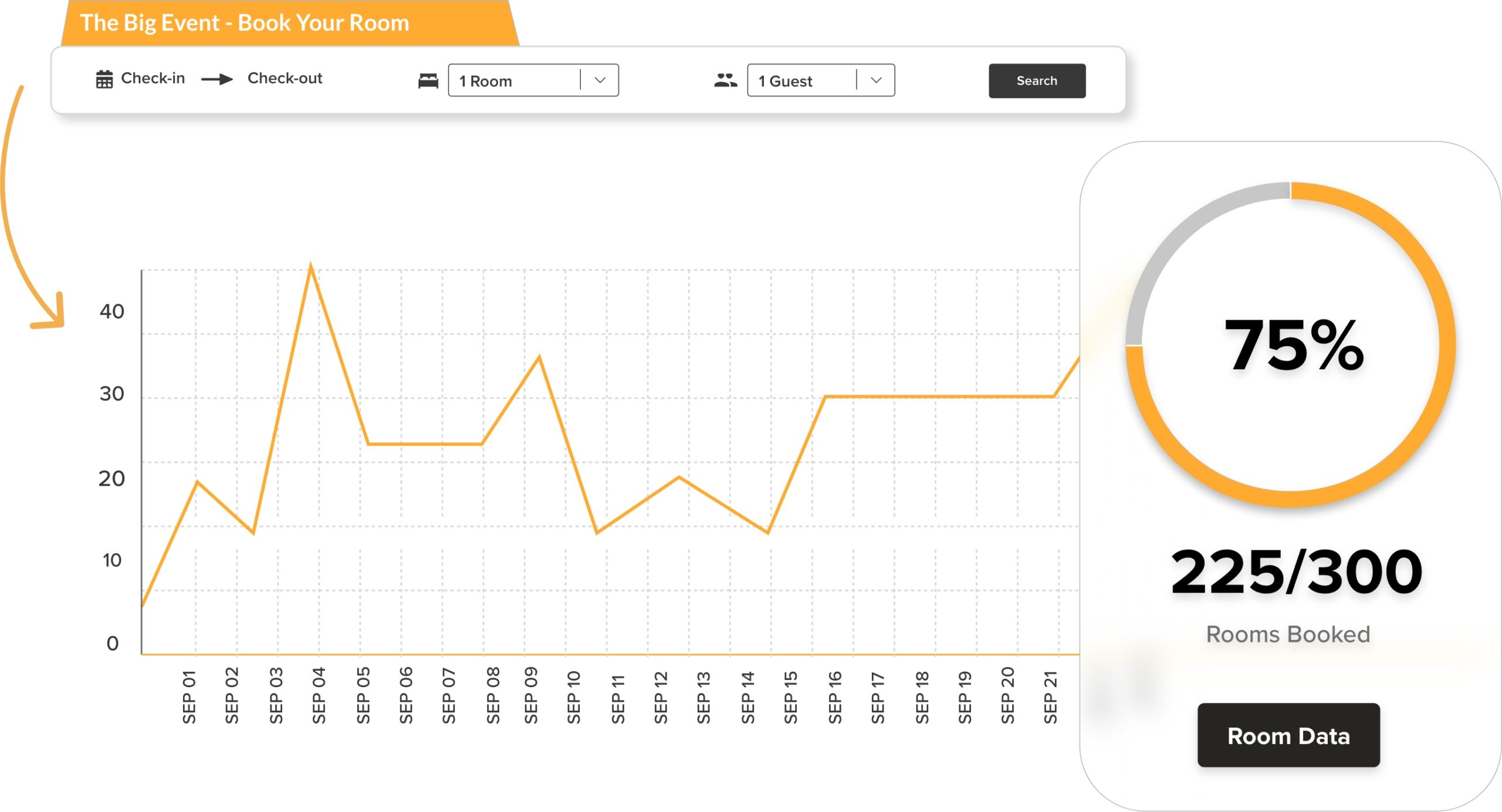
3 ways GroupSync is better than other group booking systems
From the start of GroupSync, our goal has been to bring simple and transparent solutions to booking group travel. Through our technology, we’re helping our customers save time, build trust, and accelerate revenue.
But, hey, we get it…change is hard.
The presence of technology and stylized new software has us constantly adapting for convenience. It’s formed a habitual, first thought: “Is this worth the time it takes to learn something new?”
With GroupSync, you have a better way to source and book hotels for groups, and an opportunity to experience simplicity in an overcomplicated process.
So, why stay in the lengthy cycle of antiquated methods?
Look at it this way: We aren’t changing your process, we’re improving it.
GroupSync exists to facilitate an easier experience for both group organizers and hoteliers. So, we’re explaining — directly, simply, and transparently — the top 3 ways we are better for your business and different from our competitors.
Book hotels at the best group rates – try GroupSync™ now for free >>
1. No Paid Placements
It’s both lucrative and widely known for advertisers to bid payments on a search engine with their brand predominantly displayed among the results of a keyword search.
Some legacy systems promote a ‘pay-to-play’ system where hoteliers can buy the opportunity to show up high on search results, regardless of how irrelevant they are to a group need or event.
And while this approach may be favored by hoteliers, we’ve always felt that they’re a source of friction in the group booking process and typically end up wasting more of an organizer’s time.
As a result, GroupSync has always been an advocate of no paid placements.
What that means for group organizers and meeting planners:
We position properties that are useful and relevant to your program needs according to your search criteria. With a trusted search, your results fit your search, with zero bias, and no distractions.
We don’t waste your time with irrelevant results. You can choose to filter for specific hotels, but we don’t decide that for you. You are in control of your search journey with access to the most robust data content and information for everyone.
What that means for hoteliers:
Paid placement simply puts you in front of the current customer, not the customer searching for you. Hoteliers are paying a lot of money to show up on an irrelevant search. Those marketing dollars don’t pay to narrow down the relevancy for guests to find you.
Our take: Don’t waste time or marketing dollars on clients that don’t match the accommodations you can provide.
GroupSync employs equal opportunity for both small boutiques and large hotels. All hoteliers have the same access to reach and book relevant group customers, which means all properties on GroupSync are on a level playing field where the best fit and deal win.
2. Instant Booking
We’ve created the first distribution channel to offer real-time group rates and immediate booking availability for both room blocks and meeting space at scale. This key data is imported directly from the hotel into GroupSync. It’s not scraped from other online sources, nor does it come from the Global Distribution Service (GDS) feed for online travel agents—you’re getting the best available group rates and live inventory direct from hotels.
And our lineup of participating hotels is constantly growing — to more than 20k properties in 2023! GroupSync’s Instant Booking is quickly becoming a new norm for group travel.
What that means for group travel organizers and meeting planners:
Immediate booking, real-time rates, and availability. Find properties with Instant Booking options from your search results, “add to cart”, and book your room block. Weeks of work can be done in minutes by skipping the typical RFP process and avoiding the back and forth with hotels.
Group hotel booking in a single online transaction; it’s really that simple.
What that means for hoteliers:
Instant booking and the ability for planners to get real-time rates and availability provide you with a 24/7, 365 online sales engine. Group bookings can be made around the clock, without the spent resources typically used on the RFP process.
You’re also able to offer add-on purchases such as A/V equipment and food & beverage services.
By offering Instant Booking, you’re able to move the smaller group stays and meeting sales online, freeing up resources and time while creating a better customer experience for all.
3. GroupSync is Free!
Yes, really.
Other legacy software will cost you money, while general search engines like Google will cost you valuable time. With GroupSync, you can book properties, via RFP or Instant Booking, at no cost to you.
What it means for group travel organizers and meeting planners:
Free to search over 200,000 properties worldwide. Free to book your group programs. Free to send and receive any number of RFPs. Free to utilize for all your programs.
Find the properties you need, when you need them, all in one place, at no cost to you.
No hidden fees. No fine print.
We promise.
What it means for hoteliers:
Good news, your basic hotel profile is free, making your hotel visible to group travel organizers and planners 24/7, 365.
You’ll even receive RFPs from GroupSync for free.
Not only does GroupSync increase visibility through user discovery, but it also has the potential to increase direct bookings and brand awareness.
If that sounds like free marketing, it’s because it is.
We’re helping groups, planners and hoteliers improve the way they do business—all while building the future of group travel.
Learn more about GroupSync for group travel organizers>
Learn more about GroupSync for hoteliers>







